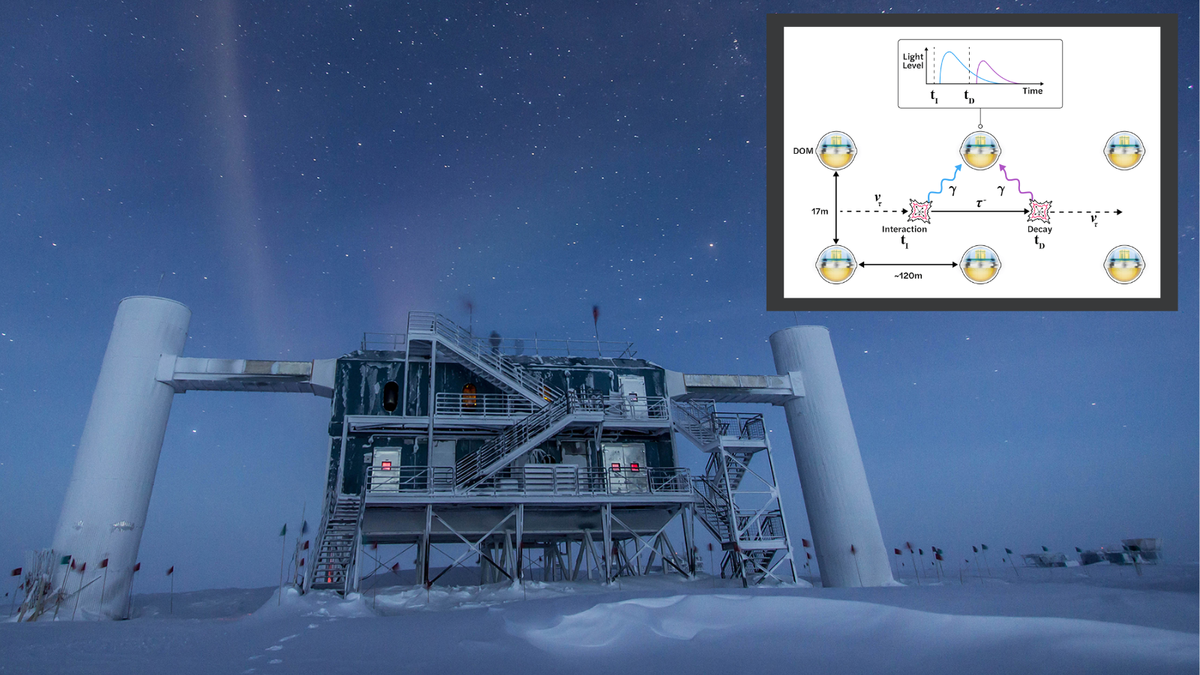Exploring the Enigmatic World of Ghost Particles through IceCube Observatory
A recent breakthrough in astrophysical research has emerged from the depths of the IceCube observatory located deep within the ice of the south pole. Astronomers have successfully detected seven elusive and exotic “ghost particle” candidates passing through Earth, shedding light on the intriguing realm of tau neutrinos. These particles serve as vital messengers, connecting us with powerful, high-energy celestial events.
Neutrinos, being charge-less and nearly mass-less entities, traverse the cosmos at speeds nearing that of light. Despite their abundant presence – an estimated 100 trillion passing through our bodies every second – their interaction with matter is remarkably minimal. This characteristic, in combination with their elusive nature, has earned them the moniker of “ghost particles.”
High-energy neutrinos originating from cosmic sources at the edges of the Milky Way, known as “astrophysical neutrinos,” manifest in three distinct flavors: Electron neutrinos, muon neutrinos, and tau neutrinos. Among these variations, tau neutrinos are particularly challenging to detect, making IceCube’s mission of tracking them a significant scientific endeavor.
The Quest for Tau Neutrinos
Initial breakthroughs in 2013 marked IceCube’s first identification of astrophysical neutrinos. In a recent development, the observatory has honed in on astrophysical tau neutrinos, potentially opening new avenues for cosmic communication. This significant milestone reflects the observatory’s continued dedication to unraveling the mysteries of the universe.
As stated by Doug Cowen, a study co-leader and distinguished professor of physics at Penn State University, “The discovery of seven candidate tau neutrino events, combined with an exceptionally low background signal, reinforces the authenticity of these detections.” This affirmation bolsters IceCube’s earlier observations of the diffuse astrophysical neutrino flux, underlining the observatory’s pivotal role in advancing astrophysical research.
In its pursuit of neutrino detection, IceCube employs an array of advanced technology including digital optical modules (DOMs) strategically positioned within the Antarctic ice. These modules, meticulously buried deep within the ice, await interactions with passing neutrinos, facilitating the discernment of charged particles emitted during such encounters.
Unraveling the Neutrino Enigma
While IceCube has previously captured tantalizing glimpses of tau-neutrino signatures, recent advancements have enabled a more precise identification of these elusive particles. Leveraging sophisticated neural networks, the research team meticulously analyzed a decade of archival data to pinpoint the distinctive traits of tau neutrinos, culminating in the detection of seven robust candidate signals.
Although the possibility of misidentification remains, the statistical improbability of background signals mimicking these tau-neutrino indicators provides substantial validation for the team’s findings. Future analyses leveraging an expanded array of DOM detectors offer promising prospects for further exploration, potentially paving the way for groundbreaking studies on neutrino oscillations.
Neutrino oscillations, encompassing the phenomenon of flavor transition over vast cosmic distances, represent a fundamental aspect of neutrino behavior. Understanding the intricacies of these oscillations could illuminate the origins and dynamics of ghost particles, shedding light on their enigmatic journey through the cosmos.
Through ongoing research and collaboration, the scientific community is poised to unlock the mysteries surrounding tau neutrinos, offering a glimpse into the uncharted realms of astrophysical phenomena.
The team’s comprehensive findings are documented in the paper repository arXiv and are soon to be published in the esteemed journal Physical Review Letters.
Image/Photo credit: source url





